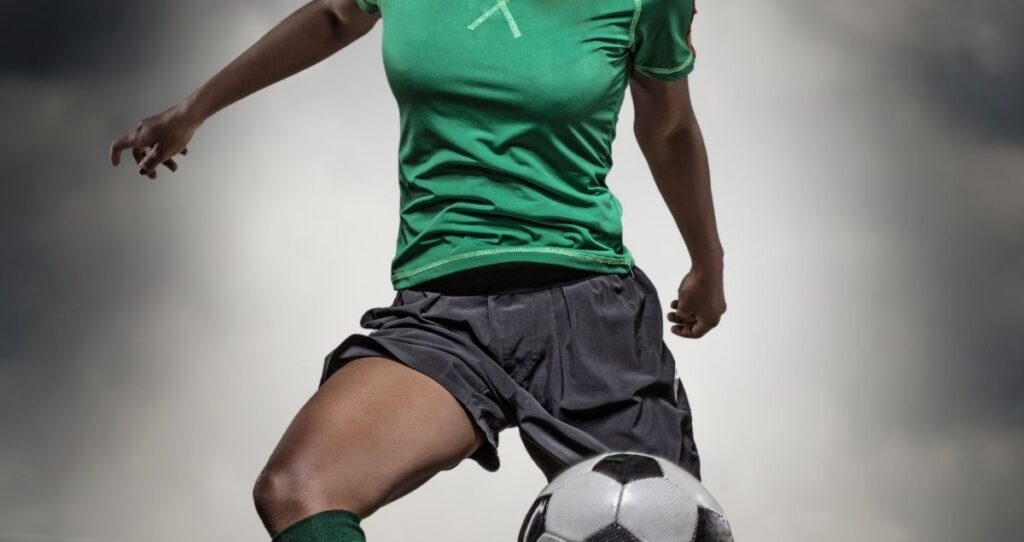Boost your betting experience and get up to $200 bonus right now!
Across the world, sports clubs are far more than mere teams competing on a field. They embody the soul of their cities, becoming a rallying point for shared identity, culture, and pride. Whether it’s the roar of a packed stadium echoing down urban streets or the legacy carved through decades of triumphs and heartbreaks, football clubs in particular serve as living symbols for millions. In places where everyday life can be fragmented by difference, sport weaves a vibrant, unifying thread that binds neighborhoods, demographics, and histories together.
These clubs aren’t just about victories or trophies; they define how inhabitants perceive themselves and how the city is seen beyond its borders. From gritty working-class roots to global superstars, each team’s story reflects the unique fabric of their home. This phenomenon transcends continents and leagues — whether it’s the passion of Premier League rivals, the flair of South American giants, or the historic rivalries in Europe, identity through sport is a universal language.
In a world that’s increasingly digital yet fragmented, the tangible, emotional connection that football clubs foster makes them cultural cornerstones. Fans don’t just watch games — they live the highs and lows, the collective drama etched into their city’s narrative. So, how exactly do these clubs shape the essence of their cities? What roles do they play beyond the pitch? And why does a simple matchday outfit stir deep-rooted pride that transcends generations? Dive into the heart of sports’ power to define city identities, from grassroots movements to global spectacle.

How Local Sports Clubs Forge Community Identity and Pride
Sport is the ultimate connector. Across diverse neighborhoods and social divides, local sports clubs spark a communal heartbeat. When a city’s team takes the field, it’s not just about the game; it’s a shared expression of belonging, history, and aspiration. Clubs become the beating pulse of their communities, websites like rktfootball.com’s community hub highlight how integral fans and culture are to this identity formation.
Consider the way local rivalries ignite lifelong traditions. In cities like Liverpool or Glasgow, the passionate derbies are more than fixtures—they are fixtures of local identity embedded in family stories and weekend rituals. This intergenerational folklore builds a sense of continuity, making the club a vessel through which identity is passed on and renewed.
But what exactly makes these clubs so powerful at weaving community identity? Here’s a breakdown:
- Shared symbols: Jerseys, chants, and landmarks related to a club become markers of pride.
- Local heroes and legends: Players who grew up in the city or rose through the club’s youth ranks resonate deeply.
- Social gathering points: Stadiums and fan zones foster intermingling across social boundaries.
- Economic and social contributions: Clubs create jobs, youth programs, and charitable projects, rooting themselves into everyday life.
This symbiosis fuels a powerful connection, making a club not just a sports entity but a cultural institution. Nike, Adidas, Puma, and other global sportswear giants bank on this phenomenon by producing the apparel that fans wear as badges of honor, each stitch signifying belonging.
| Aspect | Impact on Community | Example |
|---|---|---|
| Shared Symbols | Foster pride and unite fans | Liverpool FC’s “You’ll Never Walk Alone” anthem |
| Local Heroes | Inspire youth and reinforce identity | Steven Gerrard’s career rooted in Liverpool |
| Social Gathering | Break down social barriers | The Old Firm derby in Glasgow |
| Economic Contribution | Support local economy and programs | Community outreach by FC Barcelona |
Ultimately, what fans feel is a sense of ownership in something bigger than themselves, a pride stitched into every Adidas or New Balance jersey worn on matchday that carries generations of stories and sweat. The roll-call of chants, the shared heartbreaks, the euphoric celebrations — they all ripple into the fabric of the city itself.
Sports Organizations and Their Vital Role in Urban Development and Inclusion
Beyond the spectacle on the pitch, sports organizations serve as pillars of urban development and social inclusion. They often act as catalysts for community cohesion through programs that champion youth engagement, inclusivity, and local pride. It’s not uncommon for clubs to coordinate training camps, local tournaments, and scholarship programs that break down barriers and open doors.
Notably, adapted sports have surged in prominence, championing inclusion for all regardless of physical ability. These programs invite people from varied walks of life to contribute and celebrate collective achievements. Whether a wheelchair basketball league or blind football team, the shared spirit of competition and team effort transcends limitations and stereotypes.
Here are the multidimensional roles sports organizations play in defining city identity:
- Community Engagement: Creating programs that encourage participation at every skill level.
- Economic Stimulus: Generating jobs and attracting tourism through tournaments and events.
- Social Integration: Bridging ethnicity, class, and ability differences within urban populations.
- Health and Well-being: Promoting physical and mental wellness through accessible activities.
Sponsors like Under Armour, Reebok, and Lululemon often back these initiatives, seeing firsthand how sport-powered identity uplifts city spirits and economies alike. The clubs and organizations act as beacons for transformation, symbolizing hope and resilience.
| Organizational Role | City Impact | Illustrative Example |
|---|---|---|
| Community Programs | Encouraging youth participation | FC Bayern Munich’s youth academy outreach |
| Inclusion Initiatives | Integrating disabled athletes | Paralympic football leagues in Tokyo |
| Economic Activity | Creating employment and tourism | Hosting UEFA championships |
| Health Promotion | Improving public physical and mental health | Citywide running and football leagues |
Community-focused clubs are core to cities everywhere. Often adorned in iconic kits by Asics, Columbia Sportswear, or Champion, athletes and citizens alike share a visual language that transcends the sport itself — it’s about togetherness, pride, and collective memory. Get a deeper understanding of sports’ cultural impact by exploring community fan culture articles.
Culture, History, and Rivalries: How Football Clubs Write Their City’s Story
Few things summarize a city’s identity like the history and rivalries of its football clubs. These contests aren’t mere games; they’re charged narratives steeped in culture, politics, and community memory. For decades, these rivalries have fueled fierce loyalty as well as civic pride, becoming a language cities speak fluently.
The notorious derbies in cities such as Buenos Aires — the Superclásico between Boca Juniors and River Plate — represent social divides, struggles, and celebrations. Yet they also exemplify how football is not just a sport, but a powerful cultural phenomenon shaping urban personality. Websites like rktfootball.com’s culture section delve into these traditions and rituals that make football fandom a unique community experience.
Here’s what these rivalries embody in defining identities:
- Parsing historical divides: Class, religion, and politics impacting team allegiances.
- Cultural expression: Chants, murals, and matchday attire differentiate neighborhoods.
- Shared memories: Epic matches that become part of the city’s folklore.
- Civic pride: The impact of local clubs on national and international reputation.
Look at the fierce competition between Manchester United and Manchester City — once separated by industrial roots and working-class identities — now representing a city with a growing global profile. The fan culture around Puma or Adidas jerseys evokes this shared heritage as proudly as the colors themselves.
| Rivalry | City/Country | Historical/Cultural Roots | Impact on City Identity |
|---|---|---|---|
| Boca Juniors vs River Plate | Buenos Aires, Argentina | Class divide and neighborhood loyalties | Cultural pride and worldwide recognition |
| Old Firm (Celtic vs Rangers) | Glasgow, Scotland | Religion and politics | Community bonding and social tension |
| El Clásico (Barcelona vs Real Madrid) | Spain | Regional identity and political history | National pride and international attention |
| Manchester United vs Manchester City | Manchester, England | Economic and class history | Global city branding |
The cultural weight of these clashes means the rivalry stories become woven into teaching younger generations. It’s not just about football tactics — understanding the roots, chants, and fashion rooted in brands like New Balance or Champion adds layers of pride and belonging. For a fascinating dive into football’s deep traditions, visit this guide on football rituals.
Media, Stars, and the Globalization of City-Based Football Identities
In today’s hyper-connected world, the media plays an outsized role in shaping and broadcasting city identities through football. Social media, streaming platforms, and international television coverage take once-local passion to global audiences. Players become ambassadors for their cities, their stories inspiring fans home and abroad.
Take LeBron James’ crossover into sportswear fashion with Nike or Cristiano Ronaldo’s branding powered by Adidas — the influence extends beyond sports, weaving into lifestyle and culture. The apparel we see worn by fans and players anchors the city’s identity globally, highlighting styles and brands like Columbia Sportswear or Asics in the process.
Here’s how media and stars amplify city-club identity:
- Global broadcasting: Extending reach with accessible international fixtures, such as the Champions League.
- Player narratives: Humanizing stars through documentaries, interviews, and social content.
- Fashion influence: Jerseys and merchandise work as cultural symbols worldwide.
- Fan engagement: Virtual communities and fan campaigns that unite across geographies.
Broadcasts featured on platforms like rktfootball.com bring fans closer to the elite level, while social media embeds, such as , illustrate how excitement spills beyond physical stadiums. This global-local dynamic makes clubs emblematic, not just of a city, but of a worldwide fan culture that evolves each season.
| Media Element | Role in Identity Shaping | Example |
|---|---|---|
| Global TV Broadcasts | Showcase city clubs to international fans | UEFA Champions League on major networks |
| Social Media | Build personal connections with players | #ChampionsLeague trending worldwide |
| Player Branding | Make stars key identity figures | Cristiano Ronaldo’s Adidas campaigns |
| Merchandising | Fans’ way to visibly share allegiance | Widespread sales of Nike & Puma kits |
The fusion of media narratives and star power underlines how city identities defined through football are no longer just local phenomena but form part of a global community’s heartbeat. For more insights into football stars and their impact, explore current football superstars profiles.
FAQ – Understanding the Power of Sports in Defining City Identity

| Question | Answer |
|---|---|
| How do sports clubs impact community bonds? | By acting as social hubs, creating shared experiences, and offering local heroes fans can rally behind, sports clubs strengthen community ties. |
| What role does inclusion play in sports’ identity-building? | Inclusive programs and adapted sports bring diverse groups together, promoting unity and breaking social barriers within cities. |
| Why are rivalries significant beyond sport? | They embody cultural history, social divides, and local pride, making matches symbolic battles for identity and respect. |
| How does media amplify city-based football identity? | Media broadcasts and coverage globalize local fan culture, while star athletes personify city pride on an international stage. |
| What economic effects do clubs have on their cities? | They generate jobs, attract tourism, and spur development, making sports a vital economic engine in urban environments. |
Join today and grab up to $200 bonus for your next bets!
Content assisted by AI. This article was created in whole or in part with the help of artificial intelligence.